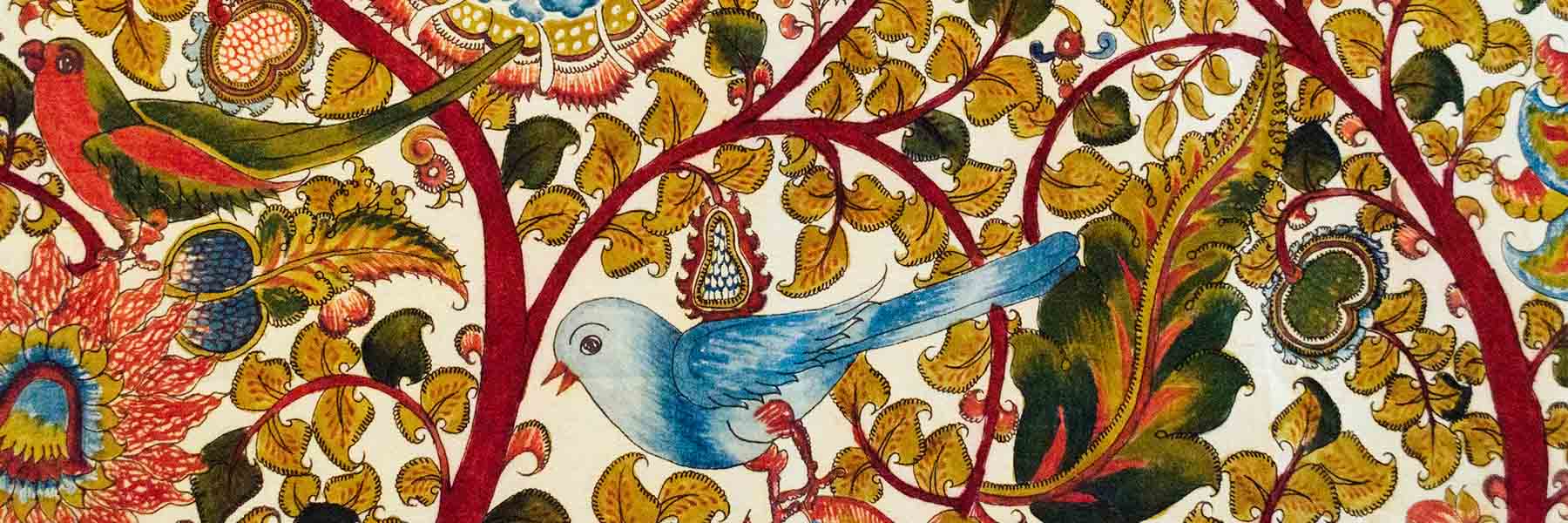
KALAMKARI: A TRADITIONAL INDIAN ART FORM
From 17th century temples to stretched canvases in modern homes, Kalamkari is a time-honored and widely beloved form of traditional Indian art. In fact to me, Kalamkari is a reminder of how art is integral to our sense of fulfillment and wellbeing, how it is synonymous with culture and tradition. I firmly believe that art is unique in its ability to connect us to our humanity and our history — and as a distinctly Indian craft, Kalamkari is intertwined with our iconography and mythologies.
Here, we answer some frequently asked questions about traditional Kalamkari art.
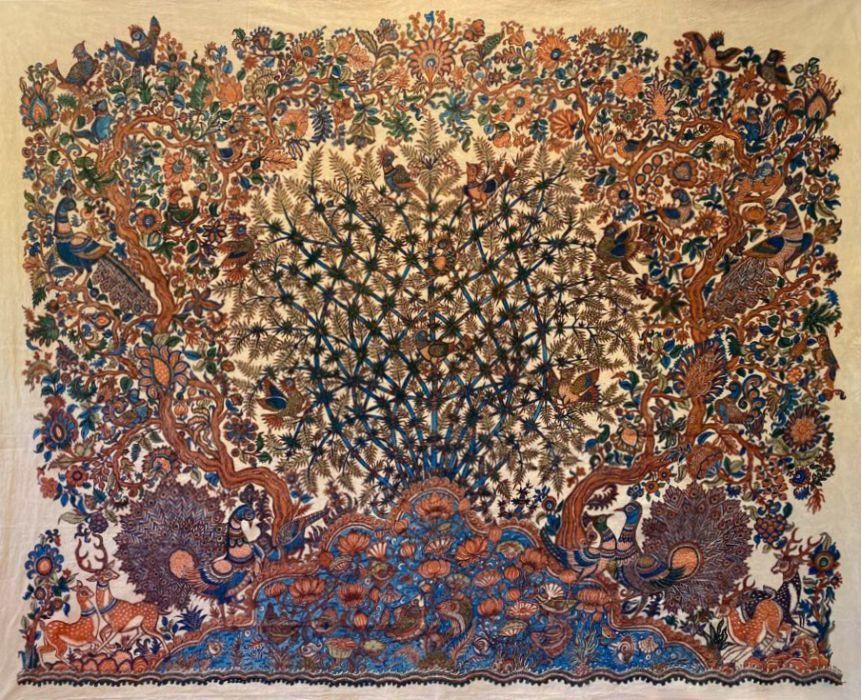
Where is Kalamkari from?
Kalamkari originated in the modern-day states of Andhra Pradesh and Telangana several hundred years ago. It was first used to portray scenes from sacred texts such as the Mahabharata, Ramayana and Bhagavatam. These paintings were often displayed as decorative backdrops in temples, depicting the stories of deities.
Why is it called Kalamkari?
Deriving its name from the word ‘kalam,’ which means pen, ‘Kalamkari’ refers to a particular, intricate style of hand-painting onto cloth.
What are the different styles of Kalamkari art?
There are two types of Kalamkari painting: Srikalahasti, which is the freehand drawing style, and Machilipatnam, which is the block-printing technique.
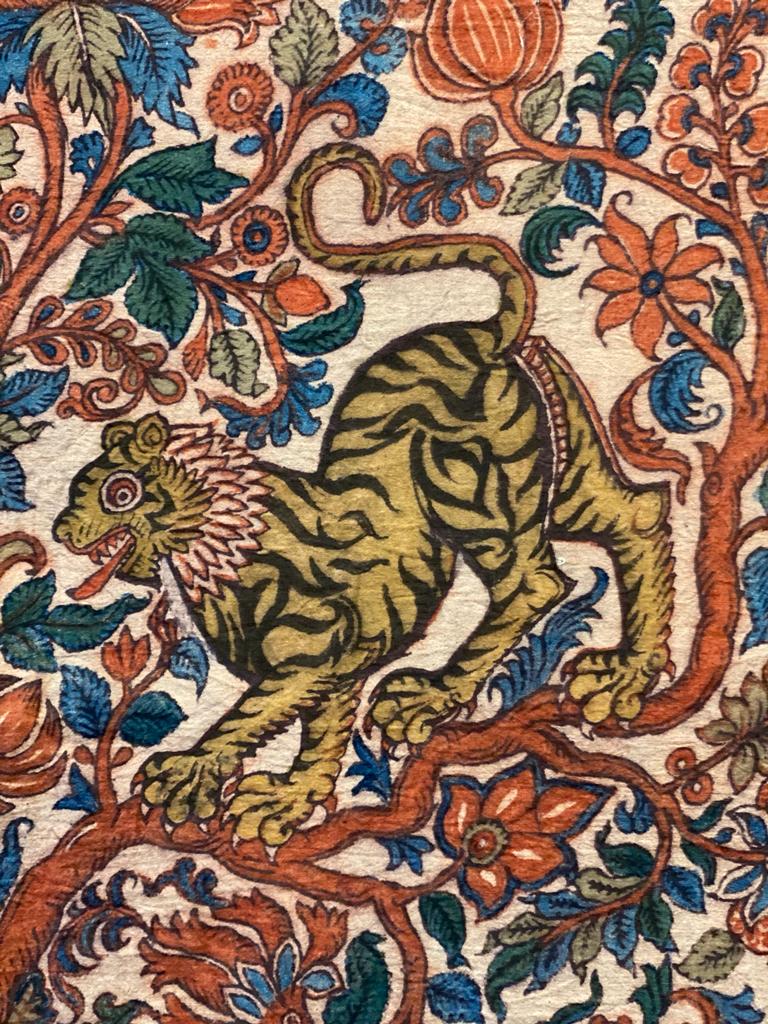
Which motifs are used in Kalamkari?
The Tree of Life is one especially popular Kalamkari motif — deeply rooted while growing towards the sky, it connects the heavens, earth and underworld. It is also a symbol of nourishment, with many animals feeding on its leaves, living in its branches and enjoying its shade. Peacocks, tigers and deer also frequently appear.
What are the 23 steps of Kalamkari?
The process of creating a Kalamkari painting is as elaborate as the delicate and detailed designs — there are 23 meticulous steps that include bleaching, softening and sun drying the fabric; preparing and mixing natural pigments; applying each color individually; and rinsing the fabric between every color application.
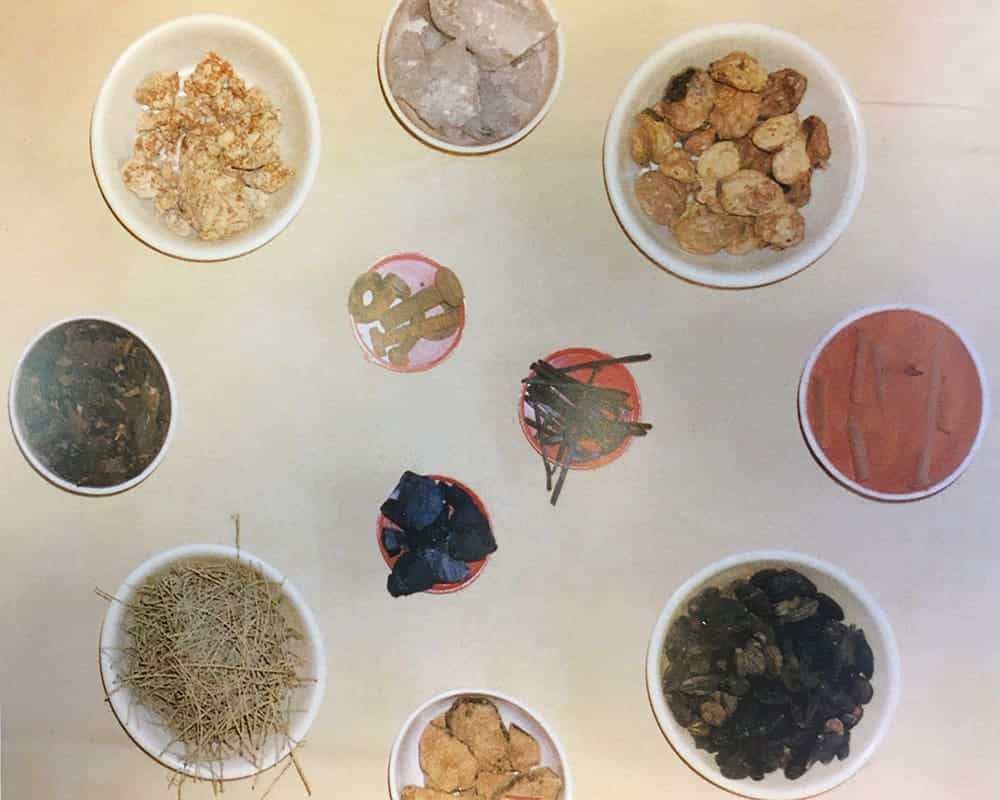
What is Kalamkari made of?
Like many traditional Indian crafts, Kalamkari uses only natural materials. These raw materials include cotton cloth, dried unripe fruit and milk to make the ‘mordant,’ charcoal sticks, black kasimi liquid, alum solution and natural pigments in red, indigo and yellow.
A Kalamkari artisan prepares the cloth.
How is Kalamkari fabric prepared?
The first step is preparing the cotton to absorb dyes by washing it to remove starch, sun-drying it fully and then treating it with mordant as a fixative.
Watch as a Kalamkari artist explains how a kalam works.
Which pen is used for Kalamkari art?
After tracing the central figure with charcoal sticks, the artist uses a finely pointed kalam, or a bamboo pen, dipped in the black kasimi liquid. The kalam is wrapped in wool that holds the liquid, and the artist squeezes this wool to release the ink while painting.
After the black outline has dried, the artist can apply a mordant with alum and begin introducing red color to the cloth.
Here an in-progress Kalamkari painting is rinsed in a river.
What dye is used in Kalamkari?
Only natural vegetable dyes are used in Kalamkari. After each application of pigment, the cloth is washed, sometimes in still water in a bucket and sometimes in running water.
Which colors are used in Kalamkari?
The final colors are earthy tones of reds, blues, greens, yellows and browns. By primarily using red, indigo and yellow dyes, the artist can mix pigments to produce secondary colors, such as applying indigo dye to yellow areas to produce green.
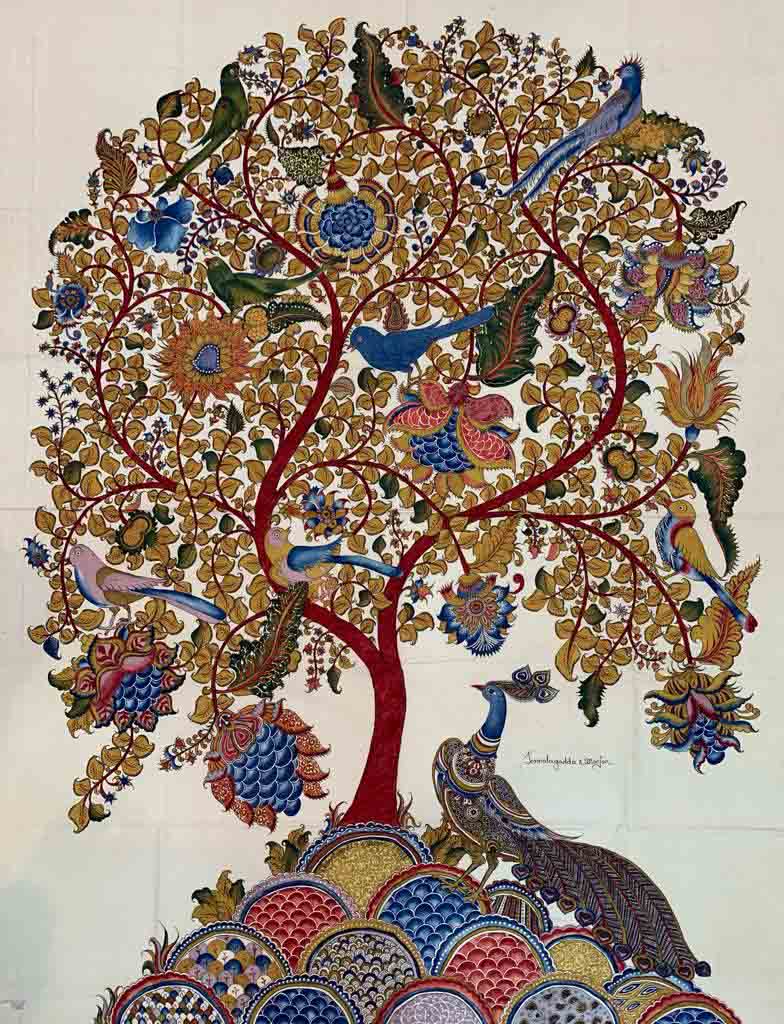
How long is the process of a Kalamkari painting?
Overall, for medium sized works, this demanding procedure takes about a month as the cloth and ink must fully dry between each step. But ultimately the time and effort are more than worth it, as the final colors are strong and exquisite, and the images are captivating in their depth and complexity. Kalamkari is truly a labor of love for art, tradition and culture, a joy that is palpable in each painting.
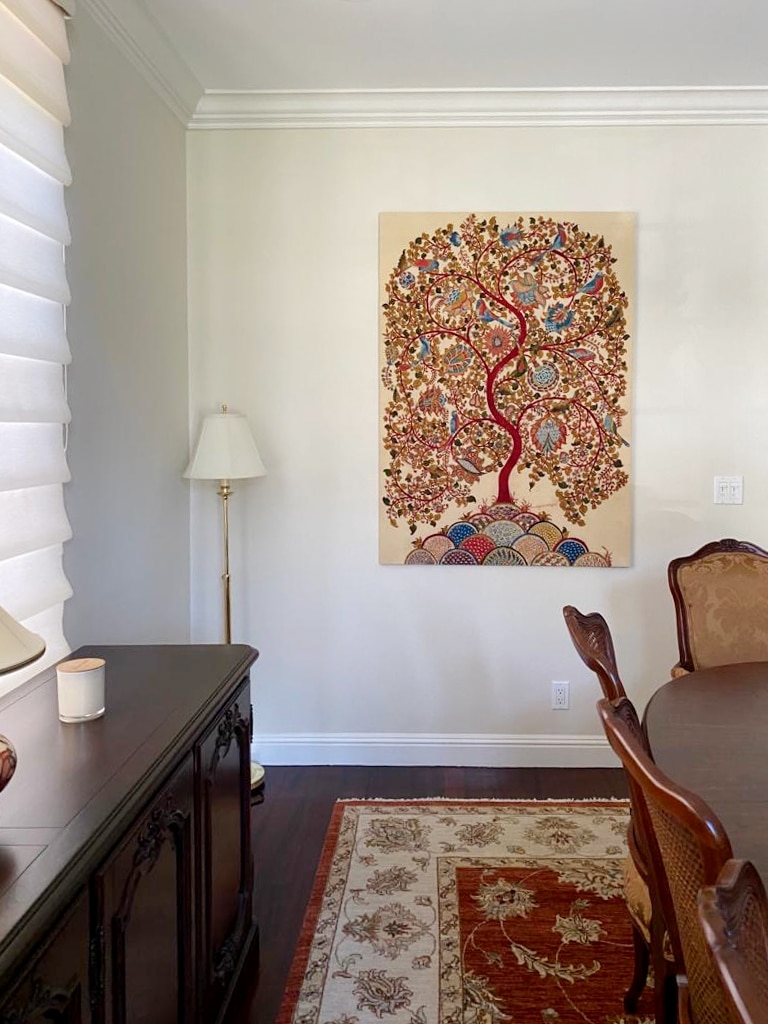
Who is famous for Kalamkari painting?
One of the last surviving Kalamkari artists in Andhra Pradesh in the 20th Century was Lakshmaiah, who is still known for his masterpieces like The Mahabharata and The Ramayana, which are in the collection of the Victoria and Albert Museum in London. Following in his footsteps, his son and descendants are also highly awarded Kalamkari artists.
Here at Laasya Art, we source our paintings from the best Kalamkari artists living in India today. Most of our generational artists have been established in this art form for several decades and have been recognized at the state, national or international level.
Is Kalamkari art still widely practiced?
Unfortunately, like many forms of traditional Indian art, Kalamkari is a generational art, meaning that typically a father or grandfather would train his children in the family trade. It has been preserved and passed down for many generations in this way. But now, given the plethora of career options available to make a steadier and more lucrative income, the children of most Kalamkari artists pursue careers in engineering, business or other fields. There are only about 16 remaining skilled Kalamkari artists living and working today, 10 of whom have won National Awards.
In fact, one of my motivations for founding Laasya Art was to encourage a new wave of appreciation and support for traditional craft artists, and I hope that this special art form will be preserved for future generations to enjoy.
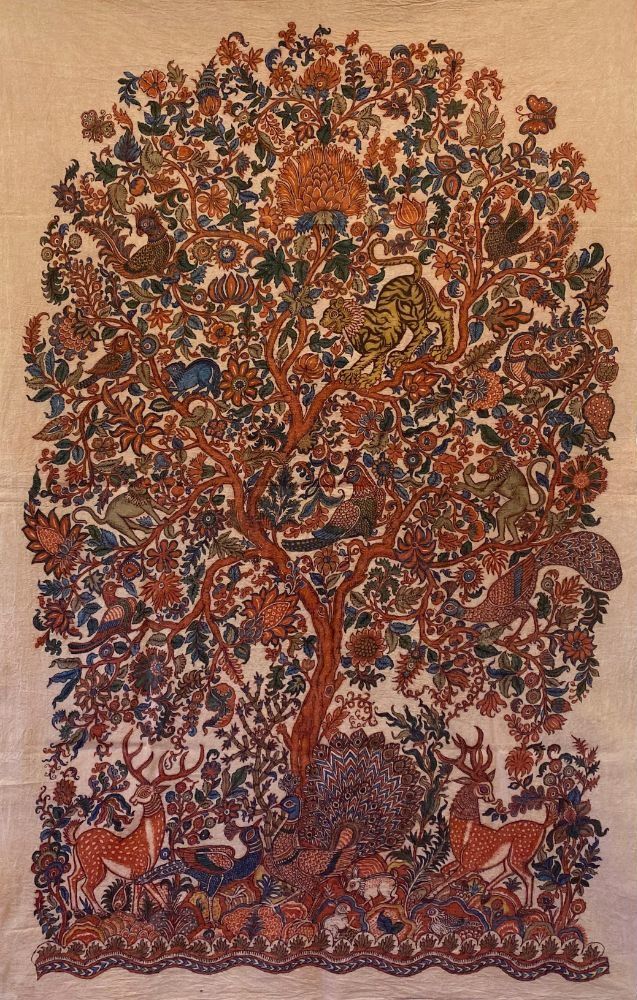
I hope you will find the same timeless pride and delight in these paintings that I have, and I hope you have enjoyed learning about the Kalamkari painting techniques. I invite you to browse our curated collection of original Kalamkari paintings online by some of the finest traditional artists living in India today https://laasyaart.com/kalamkari/. For more information or to make an appointment, please reach out to us at info@laasyaart.com or +1 650-770-9088 to view these traditional works in person at our gallery in Palo Alto (San Francisco Bay Area).
— Sonia Nayyar Patwardhan

Leave a Reply
You must be logged in to post a comment.